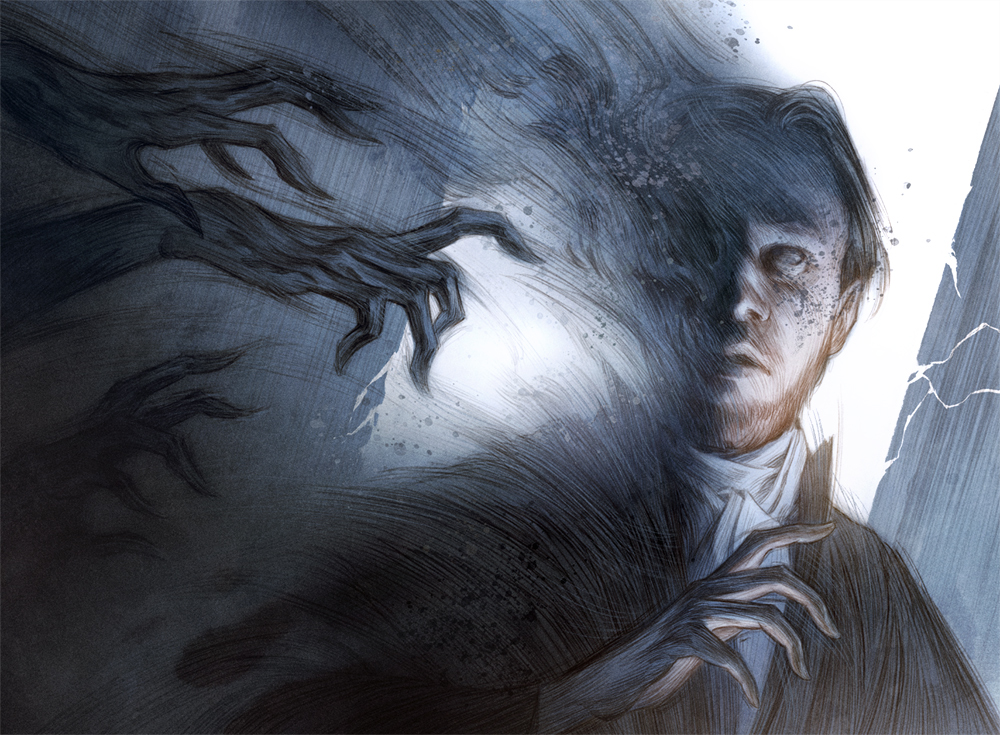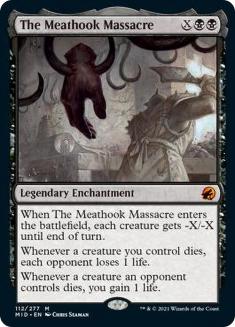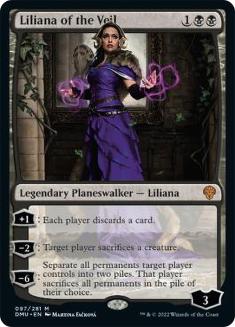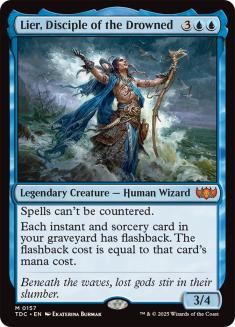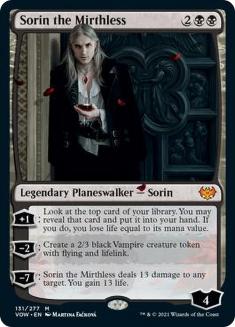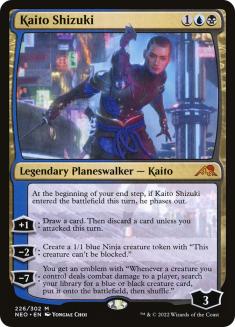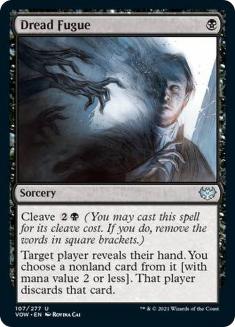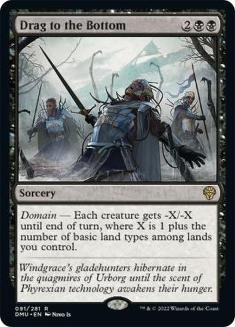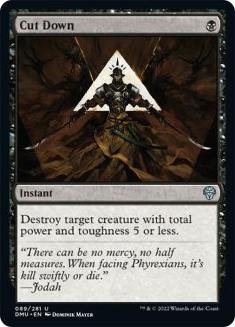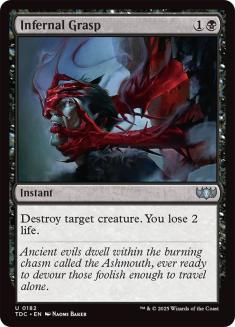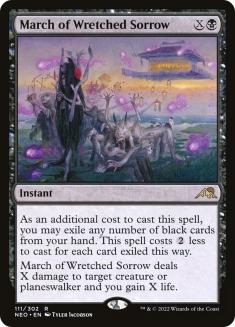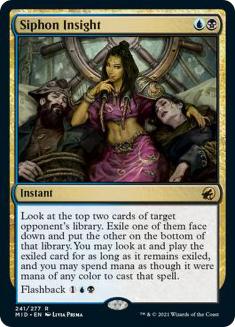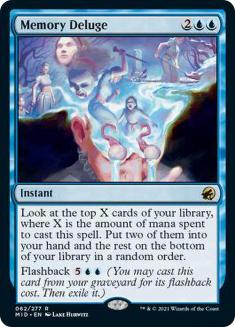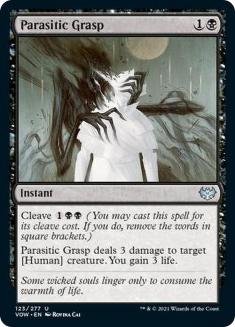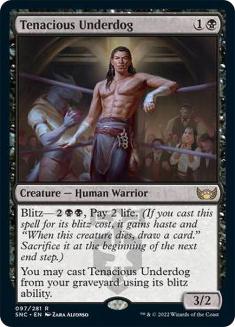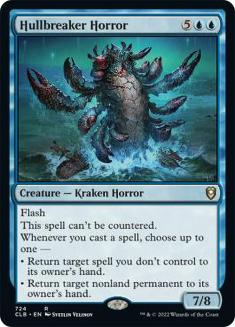The rotation has occurred, and Standard is off to the races. As predicted earlier in the year, the next Pro Tour will likely be Standard, to bring the format back to its former glory. The move was obvious to me and a few others, since there are tangible, financial advantages that come with Standard’s survival. Without a thriving Standard, if a future set does not contain cards playable in older formats (or Commander), the profit margins fall. With the return of Standard staples, booster box sales will naturally benefit.
When balanced, there is no better format than Standard. I love Modern and Pioneer, but there is something special about a format with swaths of new staples hitting the card pool every few months. The format continues to change and adapt based on cards entering, cards leaving, and all the innovation in between. Even when Standard formats become stale, there is always that rotation on the horizon that will reset the clock back to zero. With the release of Dominaria United, that reset is in full swing.
There are complaints that Standard is already solved, with black being the must-play color. In competitive Magic, there will always be a best deck. I try to advertise that fact to all those willing to listen. As someone who lives in the brewed-deck world, coming to terms with that is a vital step for tournament success. I am happy that we have identified the best deck and the common staples this early. After that occurs, the control deck builder in me can get to work, craft a strong response to it, and enjoy victory at the next Standard event I attend.
Black and Blue
I have been advertising the return of Standard for six months through my writing. In that return, I knew the black staples would keep control afloat after the rotation hit. The Meathook Massacre, Sorin the Mirthless, March of Wretched Sorrow, Infernal Grasp, and Duress have all joined us in this new era. The preview of Liliana of the Veil was the final straw to push us toward a Dimir strategy, putting a nail in the Azorius coffin for now.
The number of Liliana naysayers who claimed her reign of power had long passed surprised me. The reprint efficacy argument, using its previous application versus the current, has always been silly. Magic was slower and underpowered back then, but Liliana was on a different level. It transcends the power dynamics of its previous Standard format and has obviously taken over the current Standard. Any competitive player who has resolved a Liliana on an empty battlefield, or against one creature, knows the devastation she brings. With her having a guaranteed four slots in a Dimir Control deck, the direction became clear.
Discarding to Liliana makes countermagic less effective. I am willing to ignore this lack of synergy, so long as the blue disruption is powerful enough. In Standard, the counterspells are jokes and are easy to drop from the equation. With access to Lier, Disciple of the Drowned, that decision became even easier. The foundation of Lier and Liliana led me to this build of Dimir Control, one that I have had success with as of late.
The List
Creatures (3)
Planeswalkers (7)
Lands (26)
Spells (24)

With the format so new, I continue to tweak the list with each passing day. The win conditions and the planeswalkers are fantastic. It is the disruption that requires tuning, even in a metagame that many think is solved. Mono-Black Midrange is revered as the top deck, with other midrange decks not far from it. These decks have problematic cards for Dimir Control; however, the eventuality of Lier and Hullbreaker Horror usually get the work done.
The Planeswalker Package
If the big win conditions do not take it home, the powerful planeswalkers are dependable alternatives.
Sorin the Mirthless and Kaito Shizuki join Liliana. I am most excited to play with Sorin, since it draws cards and defends itself. It is a bit worse than Liliana, but is often the perfect follow-up to her arrival. The games with hand disruption and/or removal on Turn 2, and then a Turn 3 Liliana and a Turn 4 Sorin, end swiftly in my favor. Kaito Shizuki is a nice fifth option in the Turn 3 planeswalker slot, as it also has some powerful effects. Drawing cards, creating tokens, and defensively phasing itself out fit perfectly into most control shells.
Dread Fugue
The most controversial piece of this Dimir Control deck is Dread Fugue in the maindeck. This move led to Duress hitting the sideline, which I did not enjoy doing. The format is full of decks heavy on creatures. The number of times Duress whiffed in the early-game was not sustainable, especially when midrange and aggro decks have many threatening two-drops in their arsenal. The fallback use of Dread Fugue is its cleave ability, allowing the control user to hit any nonland card for two more mana. I am willing to pay that price to have the early-game efficiency with the mid- and late-game flexibility.
It is possible that Duress is still the better card, even with the chance of missing targets. I am not sold on Dread Fugue over it, but testing will reveal the best choice. Duress is a much more powerful card in general, since the card pool is full of noncreature spells that can brutalize control. In the meantime, it is in the sideboard, while the safer Dread Fugue is leading the charge Game 1.
Drag to the Bottom
The black removal in this deck is stellar, especially the sweepers. I have been exceedingly happy with Drag to the Bottom, a card that was near the top of my preview rankings. With the easy inclusion of trilands, it is often big enough to take down any foes on the other side of the battlefield. For just four mana, it takes care of difficult-to-kill threats, while punishing opponents for overextending. It is a great resource, but it still falls short to the sweeper that holds the number one spot.
Other Removal
The Meathook Massacre is still boss. This is the reason control has the upper hand against go-wide aggro decks in Standard. It wipes out the entire opposing battlefield with enough resources dedicated to it, and it gains a ton of life in the process. The kicker is that it remains out after its effect resolves and continues to provide a source of lifegain for the rest of the game. The Meathook Massacre will continue to be a control staple for Standard players.
The rest of the black removal is strong enough to fend off most threats, especially those in the early-game. Cut Down, Infernal Grasp, and March of Wretched Sorrow provide cheap removal with only a few stipulations. These removal spells work to create a clean battlefield for the planeswalkers to flourish in. Cut Down is the newest addition, providing removal for early-game threats, without the life loss that comes with Infernal Grasp. Infernal Grasp is still a required staple since it can kill nearly everything for just two mana. I am a huge fan of March of Wretched Soul, because it can kill cheap things, without having to pitch cards for it. In the late-game, it becomes a huge life gain spell, while taking out most creatures and planeswalkers.
Card Draw
The card draw of Dimir Control works well with and against Liliana, since both key pieces have flashback. Siphon Insight has not seen recent play; however, it is powerful for just two mana. Most matchups have cards that do great work on our side of the battlefield, while also having the option to snag a resource to make land drops. The range on Siphon Insight is strong enough, and it has significantly outperformed Consider and Impulse.
The other card draw spell is still the best and sees extensive play in older formats.
Memory Deluge is the flagship card draw spell for control players in Standard. It is tough to imagine playing a control deck in this format without it. Memory Deluge is such a strong card, it sees play over Dig Through Time in Pioneer, a decision that is hard for me to wrap my mind around. I never would have thought Dig Through Time could find itself ousted by a card draw spell legal in Standard, but here we are. While Memory Deluge is an option, it will see play in Standard control decks.
Sideboard: Removal
The sideboard has even more removal spells, geared to help Dimir Control take on opposing aggro and midrange decks. The aggro matchup is not bad, but victory can often depend on a timely sweeper and some additional lifegain. The inclusion of a third The Meathook Massacre, a fourth Drag to the Bottom, and two Parasitic Grasps helps solidify my confidence in that matchup.
Most of the other cards in the sideboard help increase the midrange matchups, with answers to threats that come back from the graveyard to haunt us.
Sideboard: Graveyard
Tenacious Underdog is a problematic creature that sees play in most Standard decks. It is difficult to manage for Dimir Control due to the lack of exile effects in black. While white-based control has a pile of answers to Tenacious Underdog, black-based control must get creative.
The level of value that Dimir Control creates can nullify most threats, even those that produce value like that. It is still wise to have cards like Rona’s Vortex and Graveyard Trespasser to cleanly answer it. I was not initially running dedicated graveyard hate like Graveyard Trespasser; however, it has overperformed in recent testing. These additions have helped even the playing field some, with the core strength of Dimir Control carrying it the rest of the way.
Sideboard: Grinding
The final cards in the sideboard come in against the grindier midrange and control matchups. The fourth Memory Deluge and the second Hullbreaker Horror add to that dynamite late-game that Dimir Control is capable of. There are times when Hullbreaker Horror is not available on time, which is why a second one has been comforting. The four Duress in the sideboard is a must with Lier, not to mention that it is eternal-level hand disruption on its own. The pile of hand disruption, powerful planeswalkers, and solid win conditions makes Dimir Control a force to be reckoned with against other slow decks. This list will continue to evolve, and I look forward to playing it in paper Standard soon.

